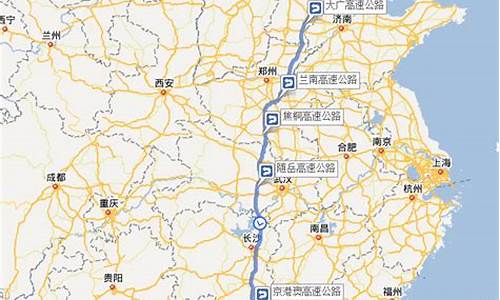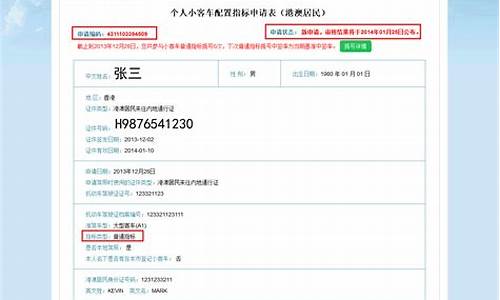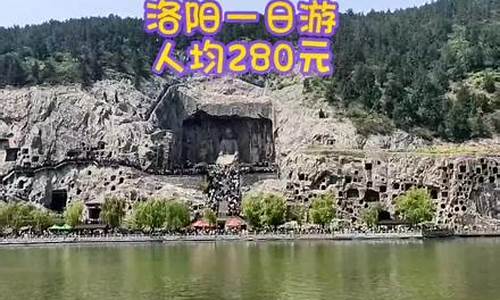您现在的位置是: 首页 > 相关资讯 相关资讯
hudson river credit union
佚名 2024-06-01 人已围观
简介hudsonrivercreditunion接下来,我将为大家解答有关hudsonrivercreditunion的问题,希望我的回答对大家有所帮助。现在,我们就开始探讨一下hudsonrivercreditunion的话题吧。1.Hudsonrivertrading是一家什么样的公司?2.求加拿大(CANADA)育空省(YUKON)的资料
接下来,我将为大家解答有关hudson river credit union的问题,希望我的回答对大家有所帮助。现在,我们就开始探讨一下hudson river credit union的话题吧。
1.Hudson river trading是一家什么样的公司?
2.求加拿大(CANADA)育空省(YUKON)的资料
3.英语高手进

Hudson river trading是一家什么样的公司?
Hudson RiverTrading(HRT)哈德逊河贸易公司,是一家总部位于纽约的创新金融科技公司。为了满足不断发展壮大的团队,HRT邀请著名设计公司Gensler为其打造位于纽约世贸中心四号大楼的总部办公空间。HRT拥有200多名员工,这个数字还在持续不断增长。这个庞大的团队主要由工程师、数学家和编程人员共同组成,一起开发自动交易算法。在这样一个人才济济的地方,HRT清楚的意识到工作环境的设计之于成长的必要性,以及他们对于金融、科技、工程、健身和娱乐全方位生活激情的塑造。
新的总部办公室跨越58、59两个楼层,以开放灵动的设计适应发展与变化。办公室与会议室集中规划于室内的中心处,以最大限度的利用自然光,并确保工作区无阻碍的壮观的城市景观视野。
求加拿大(CANADA)育空省(YUKON)的资料
On the surface, the Hudson River is looking good.
The sun on a spring morning shines on the water, off bridges and boats.The blue crabs are big, and the striped bass are bigger. On the surface, all these
would probably make you think the Hudson was about as healthy as it has been since Indian times. Sadly, Sadly, it isn’t.A study by the environmental group River keeper examined an importan indicator of the life of any river-fish and found discouraging news. Ten of thirteen species it examined are reducing, and one— the great and delicious shad— is at a historic low Riverkeeper’s report blames the usual suspects and a few new ones.
The river is getting warmer, and the heat helps starve the water of
oxygen. Power plants kill untold millions of fish when they suck up river water to
cool their machinery. Invasive species, dirty water and fertilizer runoff and
over-fishing in the ocean, where species like shad spend much of their lives, all
take their toll.
StripNot all fish are struggling.ed bass are on the increase, as are bluefish
and spot-tail shiners. But with other species moving slowly downstairs, signs point to a sicker, less stable Hudson ecosystem than many had imagined. The report shows how little we understand the biology of one of the country’s most historic and important estuaries(河口,江口). It is a reminder that even the hardest-fought conservation victories may look like the easy ones, and that self-satisfaction can be the death of environmental progress. (不知道是不是)
英语高手进
The Yukon Territory (French: Territoire du Yukon) is one of Canada's northern territories, in the country's extreme northwest. It has a population of about 31,500, and its capital is Whitehorse, with a population of 23,272. People from the Yukon are known as Yukoners.
The territory is named after the Yukon River, which means "great river" in Gwich’in.
Prehistory
Disputed evidence of the oldest remains of human inhabitation in North America have been found in the Yukon. A large number of apparently human-modified animal bones were discovered in the Old Crow area in the northern Yukon that have been dated to 25,000–40,000 years ago by carbon dating.[1] The central and northern Yukon were not glaciated, as they were part of Beringia.
At about 800 AD, a large volcanic eruption in Mount Churchill near the Alaska border blanketed the southern Yukon with ash. That layer of ash can still be seen along the Klondike Highway. Yukon First Nations stories speak of all the animal and fish dying as a result. Similar stories are told among the Athabaskan-speaking Navajo and Apache, leading to the conclusion by some anthropologists that the migration of Athabaskan peoples into what is now the southwestern United States could have been due to the eruption. After that, the hunting technology saw the replacement of Atlatls with bows and arrows.
Extensive trading networks between the coastal Tlingits and the interior First Nations developed, where the coastal peoples would trade eulachon oil and other coastal goods for native copper and furs found in the interior.
[edit] Nineteenth century
European incursions into what later became the Yukon started in the first half of the nineteenth century. Hudson's Bay Company explorers and traders from Mackenzie River trading posts used two different routes to enter the Yukon and created trading posts along the way. The northern route started in Fort McPherson, Northwest Territories along the Mackenzie River, crossed the mountains into the Bell and Porcupine Rivers to the Yukon River. The southern route started at Fort Liard, Northwest Territories, then westward along the Liard River to Frances Lake and then along the Pelly River to its juncture with the Yukon River.
After establishing Fort McPherson, Northwest Territories, John Bell crossed the mountains into the Yukon River watershed in 1845, and went down the Rat River (today the Bell River) to its confluence with the Porcupine River. After managing the fur trade at Fort McPherson, he returned to the Bell River, and followed the Porcupine to its juncture with the Yukon River, the eventual site of Fort Yukon. Soon after, Alexander Hunter Murray established trading posts at Lapierre House (1846) and at Fort Yukon (1847) at the juncture of the Porcupine and the Yukon Rivers. Murray drew numerous sketches of fur trade posts and of people and wrote the Journal of the Yukon, 1847–48, which give valuable insight into the culture of local Gwich’in First Nation people at the time. While the post was actually in Russian Alaska, the Hudson's Bay Company continued to trade there until expelled by the American traders in 1869, following the Alaska Purchase. A new trading post, Rampart House was established upstream along the Porcupine, but it also proved to be just inside Alaska's boundary. Gwich’in people, especially under the leadership of Sahneuti, played off the Hudson's Bay company against American traders from the Alaska Commercial Company.
At about the same time, Robert Campbell, coming from Fort Simpson explored a large part of the southern Yukon and established Fort Frances (1842) on Frances Lake in the Liard River basin and Fort Selkirk, Yukon (1848) at the juncture of the Yukon River and the Pelly River. In 1852, Fort Selkirk was sacked by Tlingit warriors from the coast who objected to its interference with their trade. Fort Selkirk was abandoned and not reestablished until 1889.
Anglican and Roman Catholic missionaries followed in the wake of the fur trade. Of note is William Carpenter Bompas who became the first Anglican bishop of the Yukon. Catholic missionaries were mainly from the order of Missionary Oblates of Mary Immaculate, who still retain a presence in the Yukon today.
In 1859, Robert Kennicott set off on an expedition to collect natural history specimens in the what is now the Mackenzie River and Yukon River valleys and in the Arctic tundra beyond. Kenicott became popular with Hudson's Bay Company fur traders in the area and encouraged them to collect and send natural history specimens and First Nations artifacts to the Smithsonian. In 1865 the Western Union Telegraph Expedition was mounted to find a possible route for a telegraph line between North America and Russia by way of the Bering Sea. Kennicott was the chief scientist for this expedition and the party of naturalists sent to assist him included W.H. Dall. Kennicott died of a heart attack while travelling up the Yukon River. However, Kennicott's efforts brought what is now the Yukon to the world's attention.
Rumours of the presence of gold in the area had been reported by Hudson's Bay Company traders, but little had been done about them. Following the Alaska purchase and the abandonment of Rampart house, Alaska Commercial Company traders started working along the upper Yukon River. Three miners — Alfred Mayo, Jack McQuesten and Arthur Harper — having heard of these rumours, went to work for the Alaska Commercial Company as traders, although their main interest was in the gold prospects. In 1874, Mayo and McQuesten established Fort Reliance, a few miles downstream of what later became Dawson City. Miners and prospectors slowly trickled in, and gold was found in many areas but rarely in paying quantities. In 1885, a paying amount of gold was found on the Stewart River, and McQuesten convinced the Alaska Commercial Company to start catering to miners rather than focusing only on the fur trade. The following year, paying quantities of coarse gold were found on the Fortymile River, and a new trading post, Fortymile, Yukon was established at the confluence of the Fortymile with the Yukon River
At the same time as the initial gold discoveries were being made, the US Army sent lieutenant Frederick Schwatka to reconnoiter the Yukon River by the US Army. Going over the Chilkoot Pass, his party built rafts and floated down the Yukon River to its mouth in the Bering Sea, naming many geographic features along the way. Schwatka's expedition alarmed the Canadian government, who then sent an expedition under George Mercer Dawson in 1887. William Ogilvie, a surveyor who was later to become famous during the Klondike gold Rush and was part of Dawson's expedition surveyed the boundary with Alaska.
In 1894, concerned about the influx of American miners and the liquor trade, the Canadian government sent inspector Charles Constantine of the Northwest Mounted Police to examine conditions in the Yukon district. Constantine forecast that a gold rush was imminent and reported that there was an urgent need for a police force. In the following year, he went back to the Yukon with a force of 20 men who were in place when the Klondike Gold Rush started in 1897.
[edit] Klondike Gold Rush
Main article: Klondike Gold Rush
The Klondike Gold Rush was the seminal event in the Yukon's history. A party led by Skookum Jim Mason discovered gold on a tributary of the Klondike River in August 1896. An estimated 30,000 to 40,000 people braved numerous hardships to reach the Klondike gold fields in the winter and spring of 1897-1898 after the discovery became known in 1897. With the influx of American stampeders, the Canadian government decided to create a separate territory to better control the situation. In 1901, after many had gone back, the Census put the population of the territory at 27,219, a figure that was not reached again until 1991. The influx of people greatly stimulated mineral exploration in other parts of the Yukon and led to two subsidiary gold rushes in Atlin, British Columbia and Nome, Alaska as well as a number of mini-rushes. Transportation needs to the gold fields led to the construction of the White Pass and Yukon Railway.
[edit] Twentieth century
After the gold rush, the population of the territory declined precipitously, reaching a low of 4,157 in 1921 and remained fairly steady until the 1940s. This was despite the development of other mining areas including silver in Conrad, Yukon and especially near Mayo, gold in the Kluane Lake area, and copper near Whitehorse. In the Klondike, individual miners' claims were bought out and consolidated with the help of the government by a small number of companies, including the Guggenheim's Yukon Gold Corporation who used large floating dredges. The Yukon Consolidated Gold Company continued to dredge for gold until the 1960s. A brief period of prosperity ensued during the 1930s when the price of gold rose.
By 1920, the elected territorial council had been reduced to three members and the territory was directly ruled by the Gold commissioner, a federal civil servant reporting to the Minister of the Interior.
The next important event in the Yukon's history was the construction of the Alaska Highway during the Second World War, which, after its badly needed reconstruction by the Canadian Government in the late 1940s, opened up the territory to road traffic. The war also saw the construction of a number of airfields as part of the Northwest Staging Route. However, the influx of southern highway construction crews had a devastating effect on some First Nations, who suffered from a large number of deaths from diseases to which they had no immunity.
Other highways were built during the 1950s and 1960s, resulting the decline and disappearance of the riverboats that had provided the main means of transportation until the 1960s. In the 1950s, the White Pass & Yukon Route pioneered the use of intermodal containerized shipping. Mining activity also revived, including copper mining in Whitehorse, silver and lead in Keno and Elsa, asbestos in Clinton Creek. The world's largest open-pit zinc and lead mine was opened in Faro in the early 1970s. Gold mining came back to the Klondike and other areas with the large rise in gold prices in the late 1970s.
In the 1980s and 1990s, mining declined and the role of government increased considerably with larger and larger transfers from the federal government. In 1978, responsible government was achieved and party politics were established. On another front, First Nations started lobbying and entered in land claims negotiations in the 1970s which culminated in the signing of an "Umbrella Final Agreement" in 1992. Although most First Nations have signed agreements, land claims and self-government negotiations are still going on today. The First Nations are now considered a fourth level of government and the specific nature of inter-governmental relationships is still being worked out.
[edit] Economy
Large map of the Yukon.The territory's historical major industry is mining, including lead, zinc, silver, gold, asbestos and copper. Indeed, the territory owes its existence to the famous Klondike Gold Rush of the 1890s. Having acquired the land from the Hudson's Bay Company in 1870, the Canadian government divided the territory off of the Northwest Territories in 1898 to fill the need for local government created by the influx of prospectors during the Klondike Gold Rush.
Thousands of these prospectors, led by the chance at gold, flooded the area, creating a colourful period recorded by authors such as Robert W. Service and Jack London. (See also Royal Canadian Mounted Police.) The memory of this period, as well as the territory's scenic wonders and outdoor recreation opportunities, makes tourism the second most important industry.
Manufacturing, including furniture, clothing, and handicrafts, follows in importance, along with hydroelectricity. The traditional industries of trapping and fishing have declined.
Today, the government sector is by far the biggest employer in the territory, directly employing approximately 5,000 out of a labour force of 12,500.
[edit] Transportation
In the past, the major transportation artery was the Yukon River system, both before the Gold Rush and after. As well, the coastal Tlingit people traded with the Athabascan people using passes through the coastal mountains. See also Chilkoot Pass, Dalton Trail.
From the Gold Rush until the 1950s, riverboats plied the Yukon River, most between Whitehorse at the head of navigation and Dawson City, but some going further into Alaska and down to the Bering Sea, and others along tributaries of the Yukon River such as the Stewart River.
Most of the riverboats were owned by the British-Yukon Navigation co, an arm of the White Pass and Yukon Route, which also operated a narrow-gauge railway from Skagway, Alaska to Whitehorse. The railway ceased operation in the 1980s with the first closure of the Faro mine. It is now operated as a summer time tourist train, though not on any Yukon section of the line.
Today, major land transportation routes include the Alaska Highway, which passes through Whitehorse; the Klondike Highway going from tidewater in Skagway, Alaska through Whitehorse to Dawson City; the Haines Highway from Haines, Alaska to Haines Junction, Yukon, and the Dempster Highway from the Klondike Highway to Inuvik, Northwest Territories. All these highways, except for the Dempster, are paved. Other highways with less traffic include the Campbell Highway which goes from Carmacks on the Klondike Highway, through Faro and Ross River, and veers south to join the Alaska Highway in Watson Lake, and the Silver Trail which forks off the Klondike Highway at the Stewart River bridge to connect the old silver mining communities of Mayo, Elsa and Keno City. All Yukon communities except one are accessible by mostly paved roads, but air travel is the only way to reach one remote community in the Far North (Old Crow).
Whitehorse International Airport serves as the air transport infrastructure hub, with direct flights to Vancouver, Calgary, Edmonton, Fairbanks, Juneau and Frankfurt (summer months). Every community is served by an airport, and an air charter industry exists primarily to serve the tourism and mining exploration industries.
[edit] Government and politics
Chief Isaac of the Han, Yukon Territory, ca. 1898In the nineteenth century, the Yukon was a segment of the Hudson Bay Company-administered North-Western Territory and then the Canadian-administered Northwest Territories. It only obtained a recognizable local government in 1895 when it became a separate district of the Northwest Territories.[2] In 1898, it was made a separate Territory with its own Commissioner and appointed Territorial Council.[3]
Prior to 1979, the territory was administered by the Commissioner who is appointed by the federal Minister of Indian Affairs and Northern Development. The Commissioner used to chair and had a role in appointing the territory's Executive Council and had a day to day role in governing the territory. The elected Territorial Council had a purely advisory role. In 1979, a significant degree of power was devolved from the federal government and Commissioner to the territorial legislature which, in that year, adopted a party system of responsible government. This was done through a letter from Jake Epp, the Minister of Indian Affairs and Northern Development rather than through formal legislation.
The Yukon Act, passed on April 1, 2003, formalised the powers of the Yukon government and devolved a number of additional powers to the territorial government (e.g., control over land and natural resources). As of 2003, other than criminal prosecutions, the Yukon government has much of the same powers as provincial governments, and the other two territories are looking to obtaining the same powers. Today the role of Commissioner is analogous to that of a provincial lieutenant-governor; however, unlike lieutenant-governors, Commissioners are not formal representatives of the Queen, but are employees of the Federal government.
In preparation for responsible government, political parties were organised and ran candidates to the Yukon Legislative Assembly for the first time in 1978. The Progressive Conservatives won these elections and formed the first party government of Yukon in January 1979. The Yukon New Democratic Party (NDP) formed the government from 1985 to 1992 under Tony Penikett and again from 1996 under Piers McDonald until being defeated in 2000. The conservatives returned to power in 1992 under John Ostashek after having renamed themselves the Yukon Party. The Liberal government of Pat Duncan was defeated in elections in November 2002, with Dennis Fentie of the Yukon Party forming the government as Premier.
Although there has been discussion in the past about the Yukon becoming Canada's 11th province, it is generally felt that its population base is too sparse for this to occur at present. As well, the government of British Columbia did propose to take over the territory on a number of occasions.
At the federal level, the territory is presently represented in the Parliament of Canada by a single Member of Parliament and one senator. In contrast to United States territories, Canadian territories' members of Parliament are full and equal voting representatives and residents of the territory enjoy the same rights as other Canadian citizens. One Yukon Member of Parliament — Eric Nielsen — was the Deputy Prime Minister under the Mulroney government, while another — Audrey McLaughlin — was the leader of the federal New Democratic Party.
The Yukon was one of nine jurisdictions in Canada to offer same-sex marriage before the passage of Canada's Civil Marriage Act, along with Ontario, British Columbia, Quebec, Manitoba, Nova Scotia, Saskatchewan, Newfoundland and Labrador, and New Brunswick. See same-sex marriage in Yukon.
[edit] First Nations governments
Much of the population of the territory is First Nations. An umbrella land claim agreement representing 7,000 members of fourteen different First Nations was signed with the federal government in 1992. Each of the individual First Nations then has to negotiate a specific land claim and a self-government agreement. As of December 2005, eleven of the 14 First Nations had a signed agreement. The fourteen First Nation governments are:
Government Seat
Carcross/Tagish First Nations Carcross
Champagne and Aishihik First Nations Haines Junction
First Nation of Na-cho Nyak Dun Mayo
Kluane First Nation Burwash Landing
Kwanlin Dun First Nation Whitehorse
Liard First Nation Watson Lake
Little Salmon/Carmacks First Nation Carmacks
Ross River Dena Council Ross River
Selkirk First Nation Pelly Crossing
Ta'an Kw?ch'?n Council Whitehorse
Teslin Tlingit Council Teslin
Tr’ond?k Hw?ch’in Dawson City
Vuntut Gwitchin First Nation Old Crow
White River First Nation Beaver Creek
The territory once had an Inuit settlement, located on Herschel Island off the Arctic coast. This settlement was dismantled in 1987 and its inhabitants relocated to the neighboring Northwest Territories. As a result of the Inuvialuit Final Agreement, the island is now a territorial park and is known officially as Qikiqtaruk Territorial Park, Qikiqtaruk being the name of the island in Inuktitut.
美国国会山(Capitol Hill):
Capitol Hill, aside from being a metonym for the United States Congress, is the largest historic residential neighborhood in Washington D.C., stretching easterly in front of the U.S. Capitol along wide avenues. It is one of the oldest residential communities in Washington, and with roughly 35,000 people in just under two square miles, it is also one of the most densely populated.
As a geographic feature, Capitol Hill rises in the center of the District of Columbia and extends eastward. Pierre L'Enfant, as he began to develop his plan for the new Federal City in 1791, chose to locate the "Congress House" on the crest of the hill, facing the city, a site that L'Enfant characterized as a "pedestal waiting for a monument."
The Capitol Hill neighborhood today straddles two quadrants of the city, Southeast and Northeast, and a large portion is now designated as the Capitol Hill historic district. The name Capitol Hill is often used to refer to both the historic district and to the larger neighborhood around it. To the east of Capitol Hill lies the Anacostia River, to the north is the H Street corridor, to the south are the Southeast/Southwest Freeway and the Washington Navy Yard, and to the west are the National Mall and the city's central business district.
曼哈顿(Manhattan):
Manhattan is one of the five boroughs of New York City, located primarily on Manhattan Island at the mouth of the Hudson River.
New York County, which has the same boundaries as the Borough of Manhattan (and which should not be confused with New York City), is the most densely populated county in the United States, with a 2007 population of 1,620,867 living in a land area of 22.96 square miles (59.47 km?), or 70,595 residents per square mile (27,267/km?). It is also one of the wealthiest counties in the United States, with a 2005 personal income per capita above $100,000.Manhattan is the third-largest of New York's five boroughs in population but the smallest in area. It consists of Manhattan Island and several small adjacent islands: Roosevelt Island, Randall's Island, Ward's Island, Governors Island, Liberty Island, part of Ellis Island,and U Thant Island; as well as Marble Hill, a small section on the mainland adjacent to the Bronx.
Manhattan is a major commercial, financial, and cultural center of both the United States and the world.Most major radio, television, and telecommunications companies in the United States are based here, as well as many news, magazine, book, and other media publishers. Manhattan has many famous landmarks, tourist attractions, museums, and universities. It is also home to the headquarters of the United Nations. Manhattan has the largest central business district in the United States, is the site of both the New York Stock Exchange and NASDAQ, and is the home to the largest number of corporate headquarters in the nation. It is the center of New York City and the New York metropolitan region, hosting the seat of city government and a large portion of the area's employment, business, and recreational activities.
The name Manhattan derives from the word Manna-hata, as written in the 1609 logbook of Robert Juet, an officer on Henry Hudson's yacht Halve Maen (Half Moon).A 1610 map depicts the name Manahata twice, on both the west and east sides of the Mauritius River (later named the Hudson River). The word "Manhattan" has been translated as "island of many hills" from the Lenape language.The Encyclopedia of New York City offers other derivations, including from the Munsee dialect of Lenape: manahachtanienk ("place of general inebriation"), manahatouh ("place where timber is procured for bows and arrows"), or menatay ("island").
密西西比河(Mississippi River):
The Mississippi River is the second-longest river in the United States,with a length of 2,320 miles (3,730 km)from its source in Lake Itasca in Minnesota to its mouth in the Gulf of Mexico.
The Mississippi River is part of the Missouri-Mississippi river system, which is the largest river system in North America and among the largest in the world: by length (3,900 miles (6,300 km)), it is the fourth longest, and by its average discharge of 572,000 cu ft/s (16,200 m?/s), it is the tenth largest.
The name Mississippi is derived from the Ojibwe word misi
好了,关于“hudson river credit union”的话题就讲到这里了。希望大家能够通过我的讲解对“hudson river credit union”有更全面、深入的了解,并且能够在今后的工作中更好地运用所学知识。









